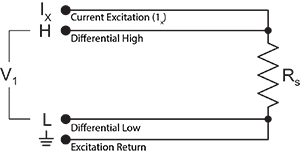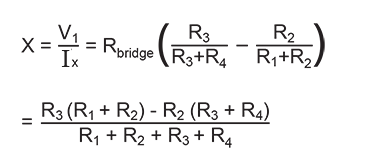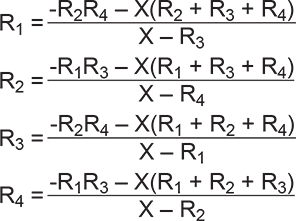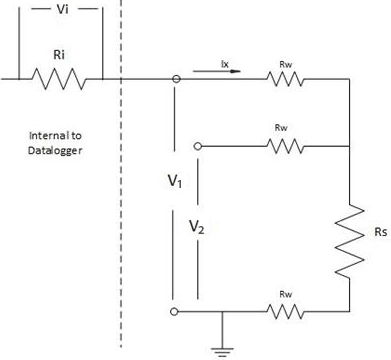Resistance measurements with current excitation
U terminals can be configured to supply precise current excitation for use with resistive bridges. Resistance can be measured by supplying a precise current and measuring the return voltage. The data logger supplies a precise current from terminals configured for current excitation. Return voltage is measured on U terminals configured for single-ended or differential analog input.
U terminals can be configured as current-output terminals under program control for making resistance measurements. For the current return, use the signal ground ( ) terminal closest to the current source terminal. CRBasic instructions that control current excitation include:
) terminal closest to the current source terminal. CRBasic instructions that control current excitation include:
Resistance()- Applies an excitation current to a circuit and measures the resistance. The maximum excitation current is ±2500 μA.Resistance3W()- Makes a three-wire resistance measurement. The maximum excitation current is ±2500 μA.
Resistive Bridge Circuits with Current Excitation: (use the signal ground ( ) terminal adjacent to the current excitation terminal)
) terminal adjacent to the current excitation terminal)






